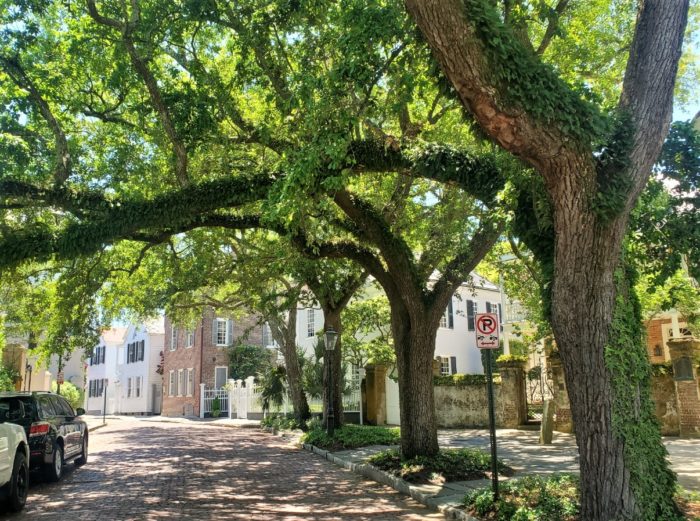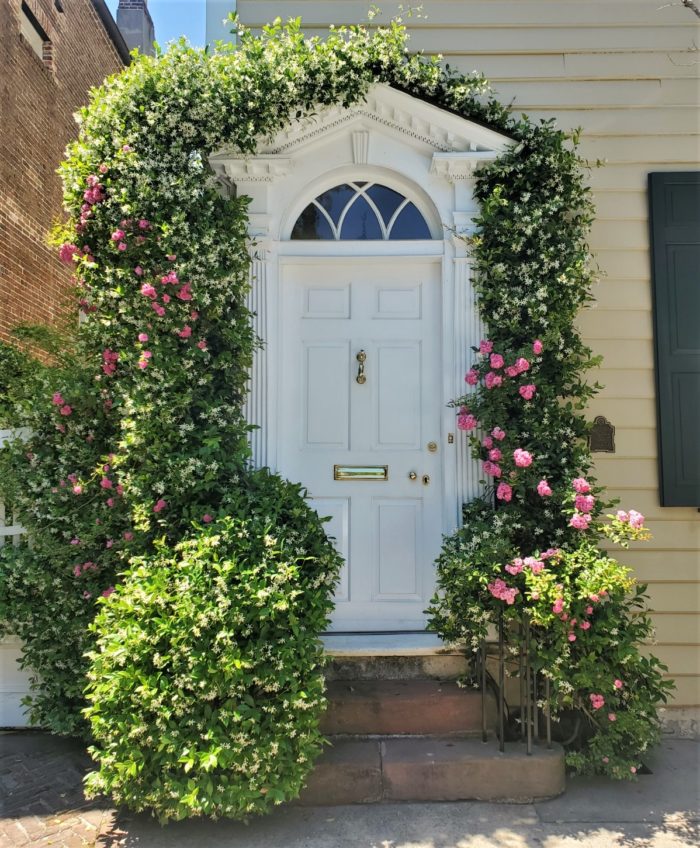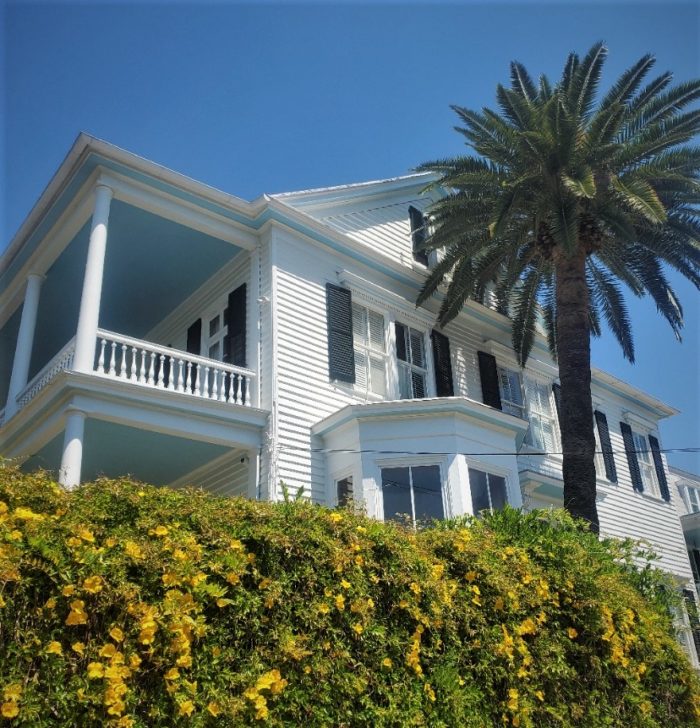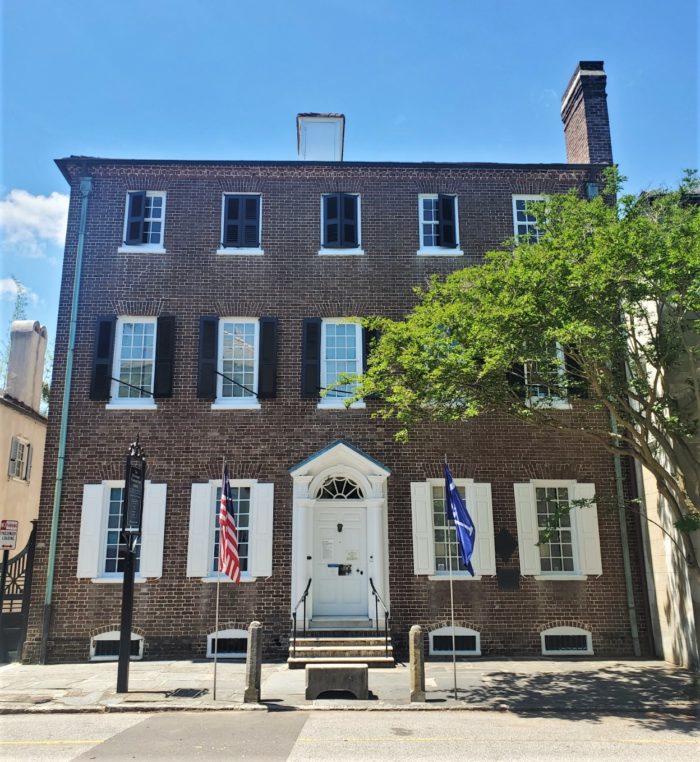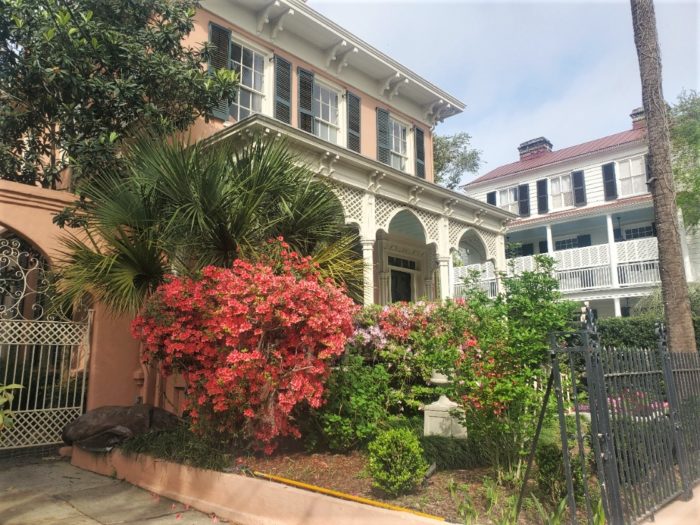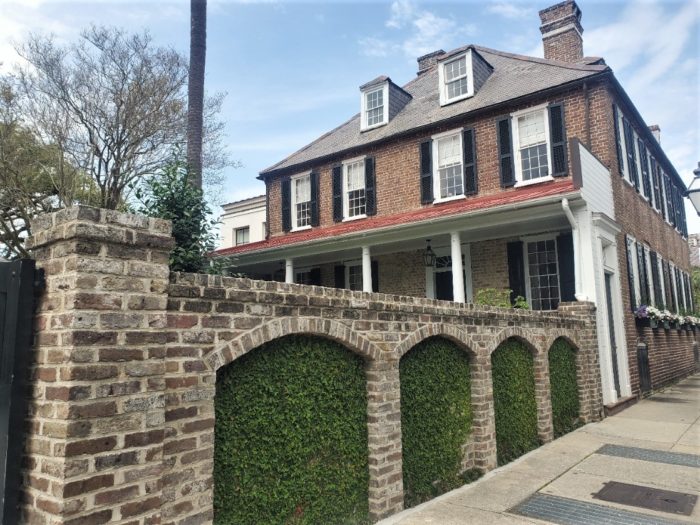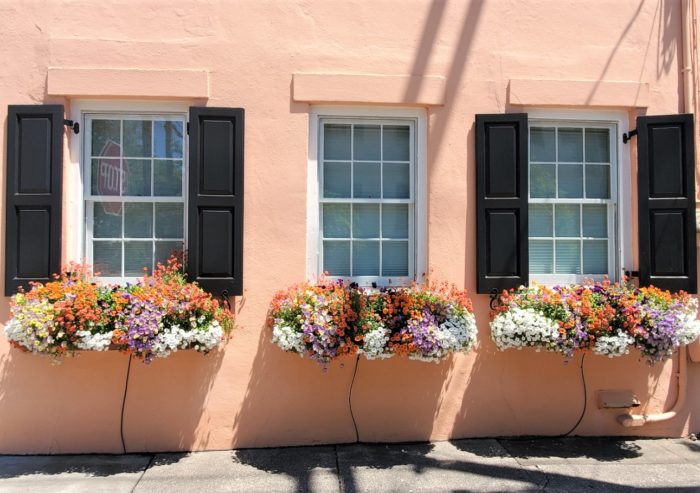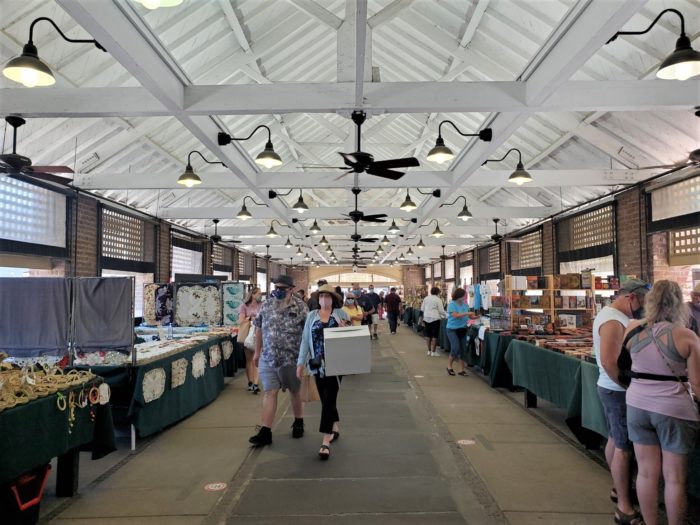“The Bend” on Church Street is simply one of Charleston’s most picturesque spots. Part of the charm is that this section of Church is paved with bricks (down to White Point Garden). Charleston used to have many brick streets — this is the last remaining one.
May Flowers…
Some beautiful May flowers ring the door of a Church Street house built in 1818. Unlike the Charleston single houses of the day, rather than opening onto a porch, this door opens into a passage inside the house which accesses a front room — likely once used for business.
Beautiful Broad
This handsome house on Broad Street was built c. 1870. It is the second house on the site. The first burned down in the fire of 1861 and legend has it the owner pulled an armchair into the middle of Broad Street and watched it go up in flames.
He Really Really Did
The Heyward-Washington House on Church Street, c. 1772, was owned by a signer of the Declaration of Independence (Thomas Heyward, Jr.) and was where George Washington stayed — and slept — when he visited Charleston in 1791.
Indoor Plumbing
This handsome house on Rutledge Avenue was built about 1852 and contains some of the earliest examples of indoor plumbing in Charleston (including a copper bathtub and basement cistern).
Once Twice
This handsome house on King Street was built c. 1762 as a double tenement. In the mid-1900’s it was converted to a single family house. The firewall between the two original tenements can still be seen in the roof.
Tenements
These beautiful flower boxes are on a double tenement building on Anson Street built c. 1845. Two businesses used to be on opposite ends of the building — a bakery and a cigar store.
Market Shed
The Charleston City Market is most visited site in Charleston. Dating back to about 1804, selling meat, vegetables, and fish was its prime purpose. The land for the market was given to the City in 1788 with one condition — that it must remain in use as a market for perpetuity. So far, so good.
Carriage Steps
The brown stone in front of this grand gate on Rutledge Avenue is one of at least 105 “carriage steps” that be found around downtown Charleston. As the name suggests, they were used for people to climb into carriages or make it easier to mount a horse.
Old City Jail
One of the most haunted buildings in Charleston, the Old City Jail was built in 1802 and housed some of the most notorious criminals (and others) in Charleston history. I had the pleasure of having an office in there for a couple of years, as President of the American College of the Building Arts — before writing and creating Glimpses of Charleston.
- « Previous Page
- 1
- …
- 28
- 29
- 30
- 31
- 32
- …
- 188
- Next Page »
